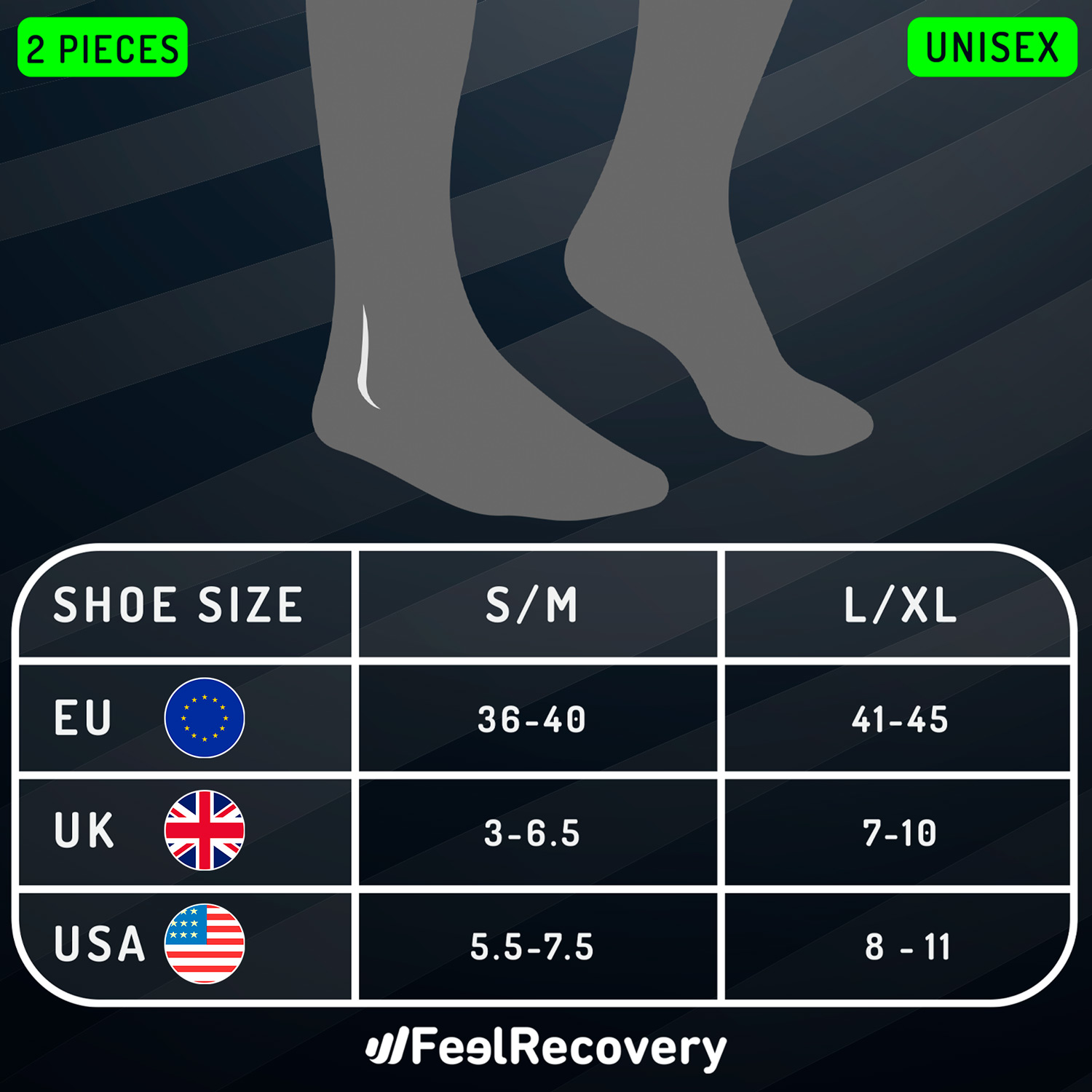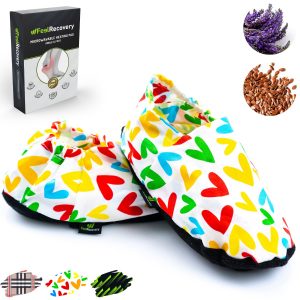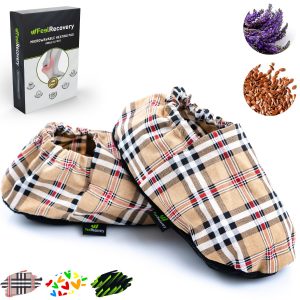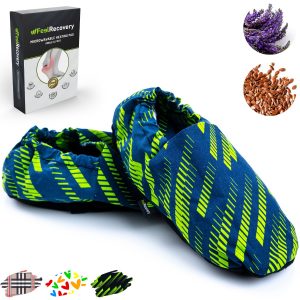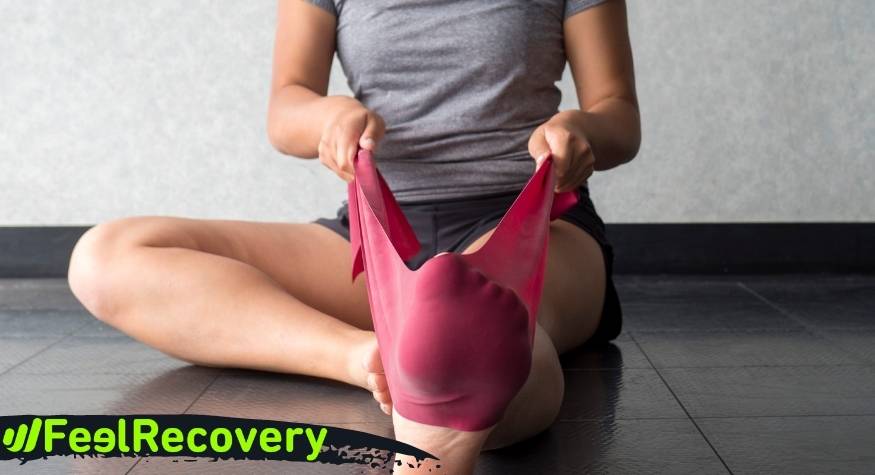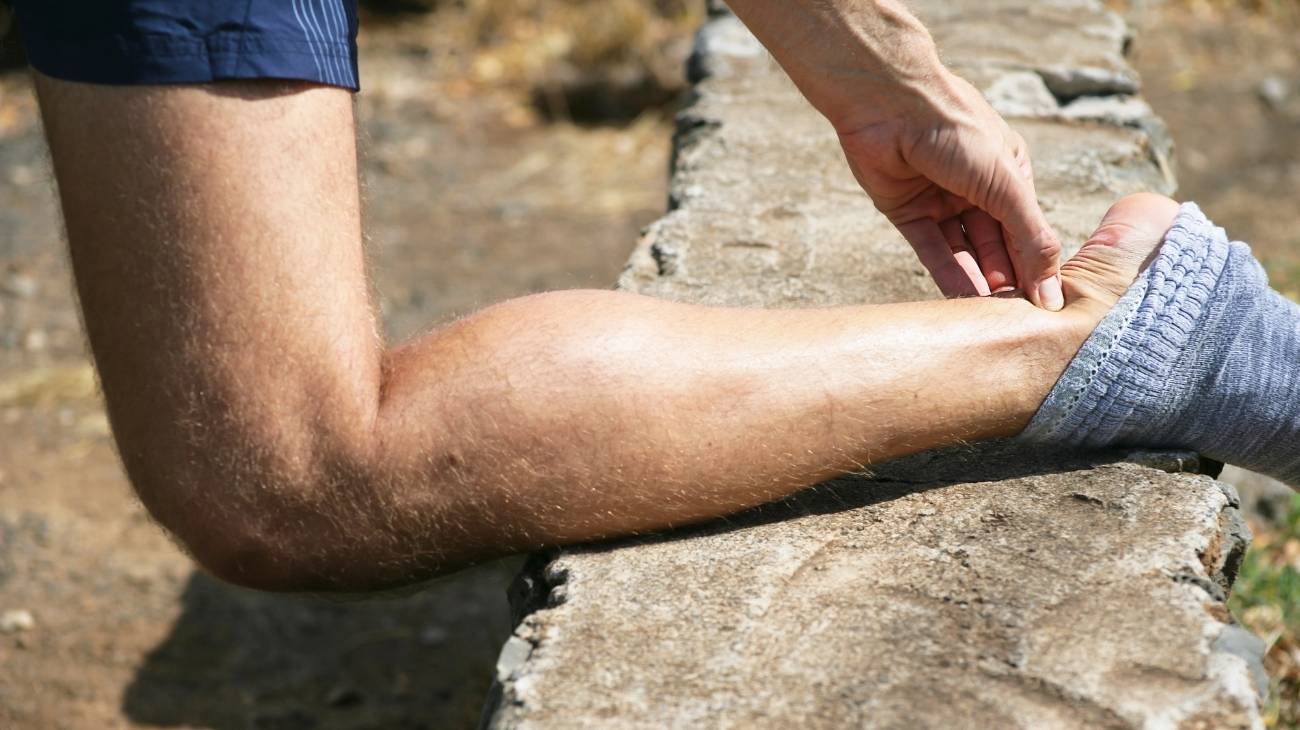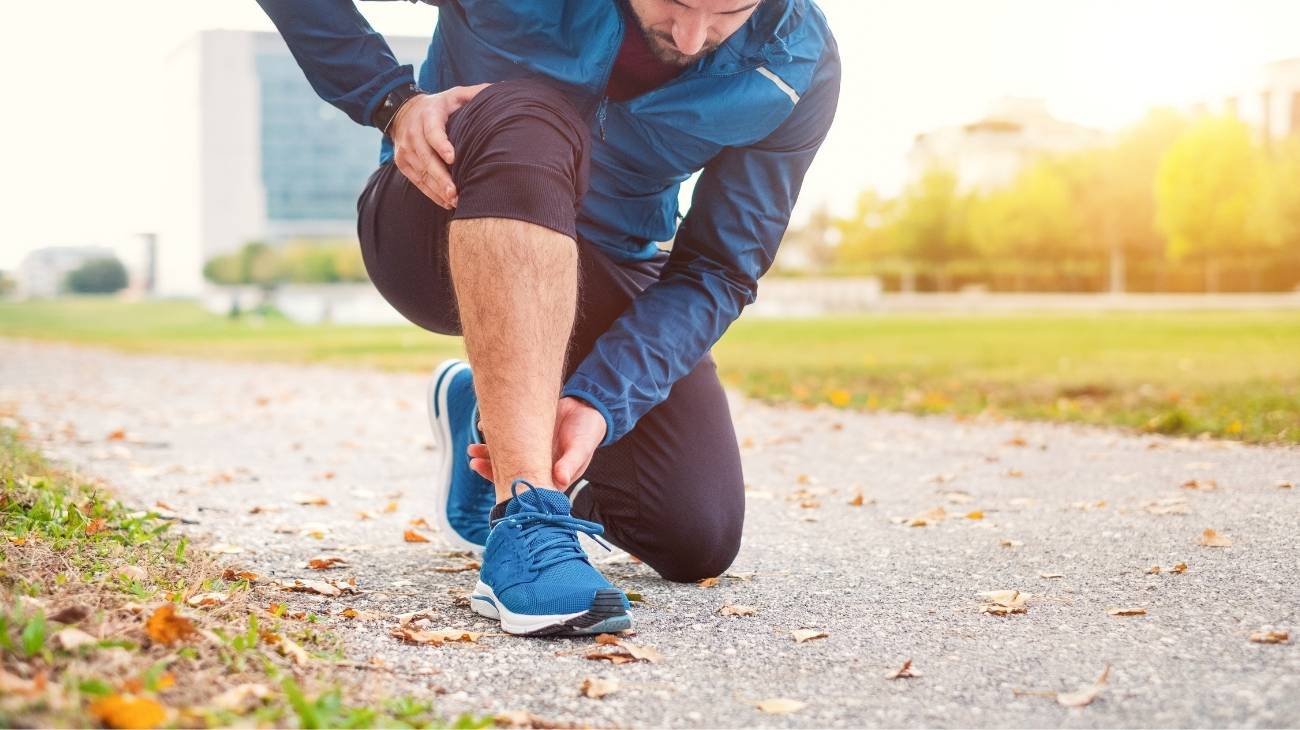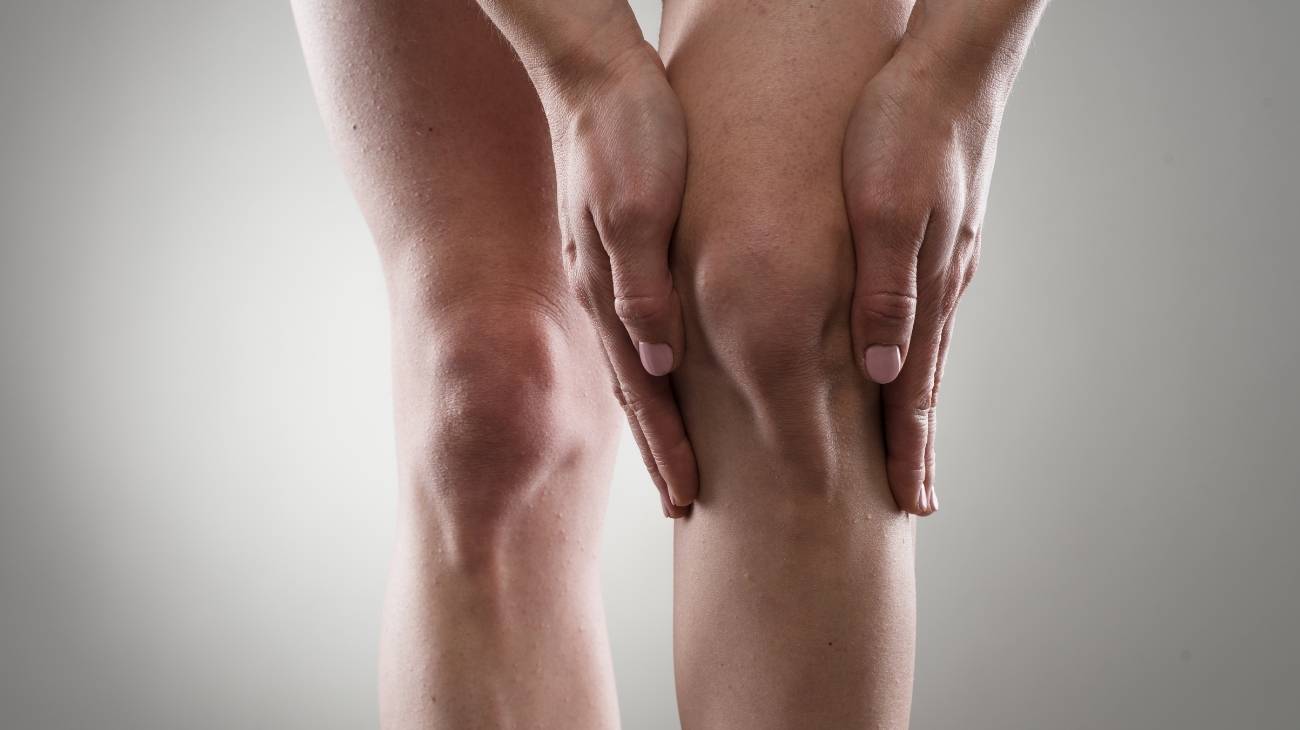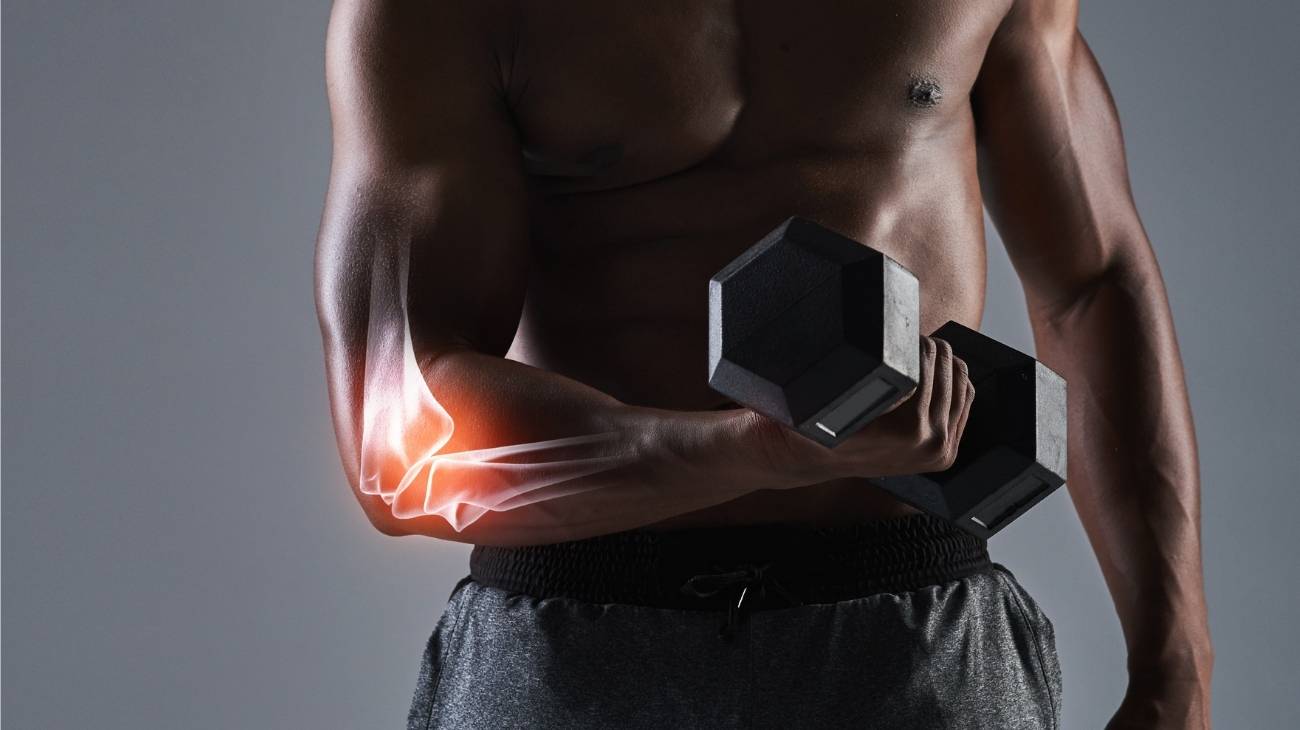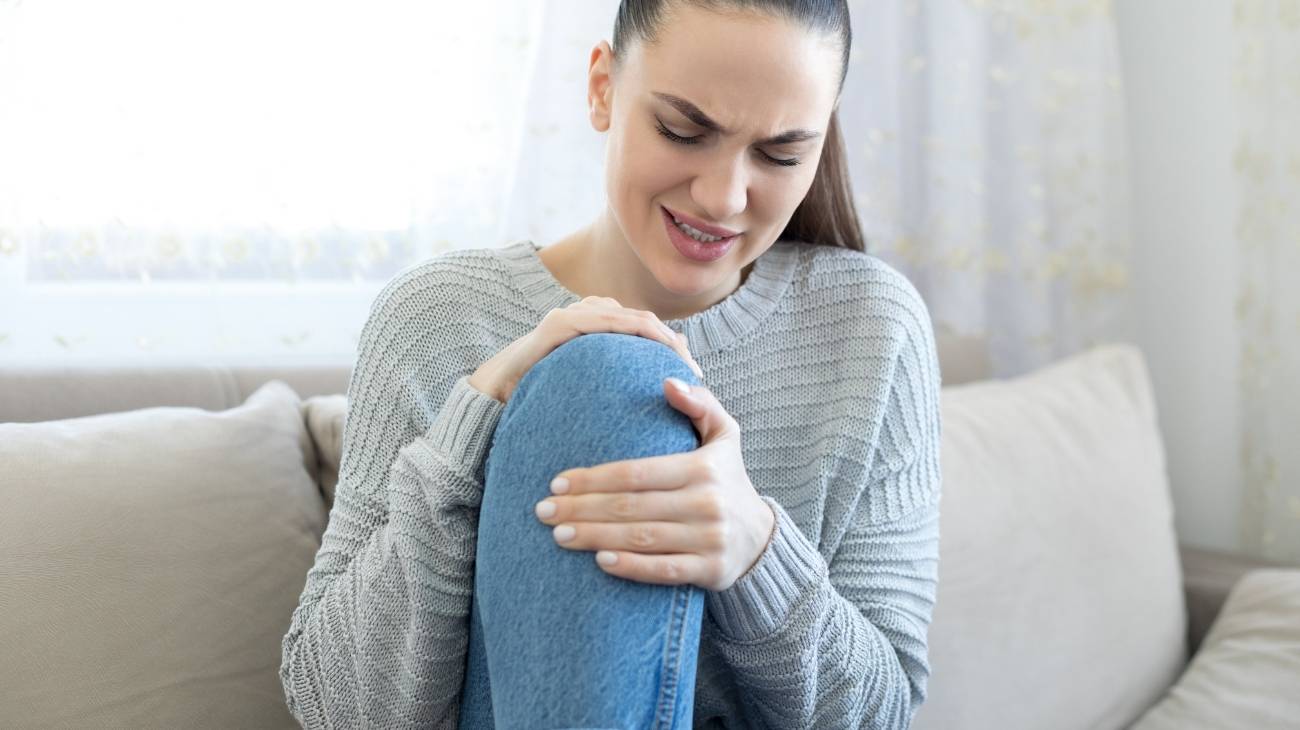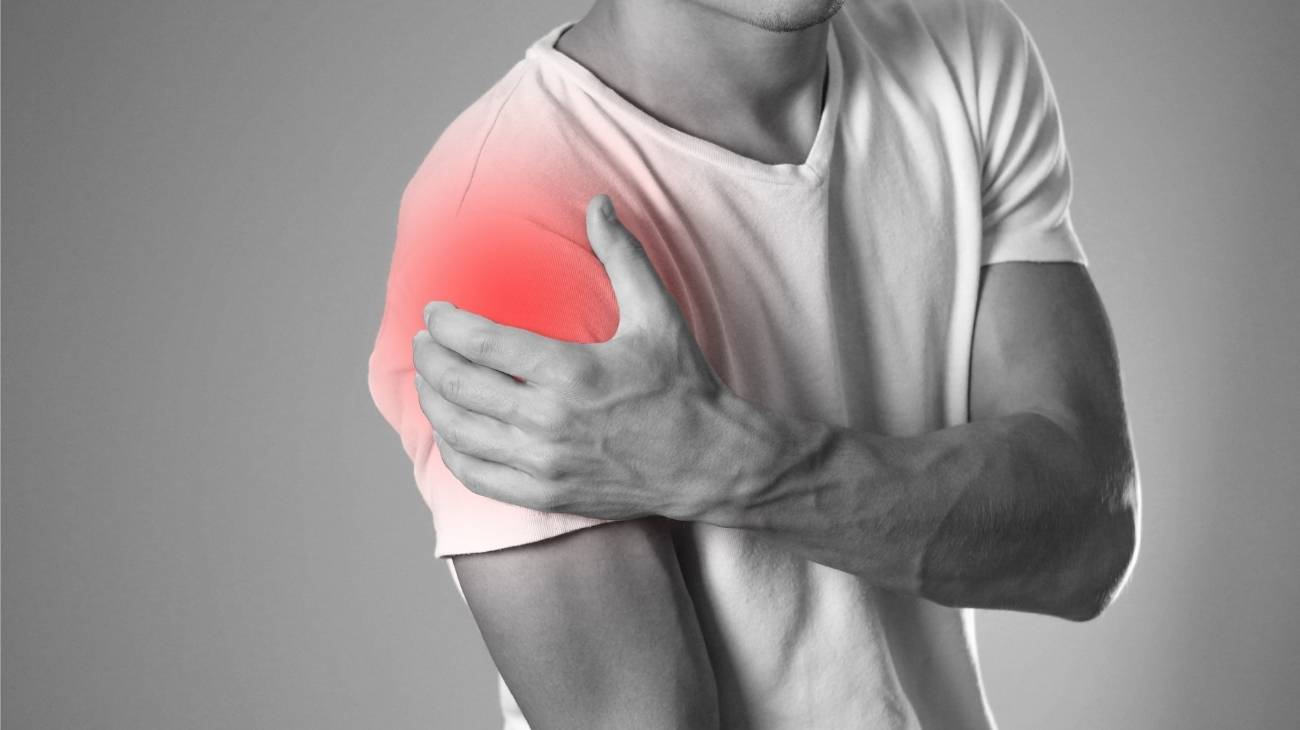- What is ankle or peroneal tendonitis?
- What are the causes and risk factors for ankle tendonitis?
- Best products for ankle tendonitis
- Main symptoms that warn us that we have tendonitis in the ankle
- What treatments are there to improve and cure peroneal tendonitis of the ankle?
- Prevention for ankle tendon inflammation
Ankle tendinopathy, also called peroneal tendinopathy, is an injury that occurs in the tendon fibres located in the back of the foot. This condition causes constant pain and loss of movement in the joint, which can lead to quite obvious swelling in the affected area.
If you want to know what this condition is all about, we invite you to continue reading this article to the end. We will explain in an easy and detailed way what are the symptoms of this ailment and why it is generated. And don't miss the tips on how to avoid ankle tendonitis.
What is ankle or peroneal tendonitis?
Tendonitis of the ankle is an inflammation that occurs in the tendons of the peroneus longus lateralis longus, peroneus brevis and peroneus anterioris. The function of these tendons is to join the lateral malleolus with the pedius muscle and the flexors of the foot. This inflammation is caused by micro ruptures that are created in the tendon fibres and by the accumulation of substances or metabolites that are abnormally lodged in the tissues.
This arises as a consequence of the lack of blood supply to release the toxic substances and thus produce the exchange of oxygen and nutrients between the blood and the tissues. Usually the onset of this ailment is generated by the overdemanding of the joint.
What are the causes and risk factors for ankle tendonitis?
Below you will find all the information about the causes and risk factors that increase the occurrence of peroneal tendonitis
- Repetitive exercises: Excessive demand on the joint can cause the tendons located in the ankle to work unduly. This will lead to microscopic ruptures of the tendon fibres. It is common to find these factors in athletes and workers who place demands on the ankle.
- Congenital malformations and bone spurs: Imperfect biomechanical formation can cause the musculature and tendons located in this part of the body to work in a demanding manner, which will cause inflammation and pain leading to tendonitis.
- Overweight: Obesity can lead to tendonitis in this joint. This is due to the lack of space that the joint body has to work properly, which will cause the tendons to be strained to move the foot.
- Inadequate warm-ups: The lack of exercises that promote gradual activity can lead to injuries to the peroneal tendons. This is also related to staying in places with freezing temperatures, which will have the same result of injury.
- Sudden movements: Sudden movements are factors that increase the likelihood of ankle tendonitis.
- Poor diet and sedentary lifestyle: Eating the wrong foods or foods that do not provide nutrients to the body will lead to tendonitis. This can increase the likelihood if the patient does not exercise regularly.
- Trauma: Injuries and blows can lead to peroneal tendonitis due to the pressure to which the tendons are subjected.
- Improper footwear: Shoes with high heels and tight heels can cause undue stress on the tendon structure, which can lead to inflammation in the tissues.
Best products for ankle tendonitis
Bestseller
-
2 Ankle Compression Sleeve (Black/Gray)
$19.95 -
2 Ankle Compression Sleeve (Green/Navy)
$19.95 -
2 Ankle Compression Sleeve (Pink/Bordeaux)
$19.95 -
Ice Pack for Foot - Cold Therapy Socks (Black)
$24.95 -
Ice Pack for Foot - Cold Therapy Socks (Green)
$24.95 -
Ice Pack for Foot - Cold Therapy Socks (Pink)
$24.95 -
Microwavable Heated Slippers (Hearts)
$24.95 -
Microwavable Heated Slippers (Oxford)
$24.95 -
Microwavable Heated Slippers (Sport)
$24.95 -
Microwaveable Heating Pad for Pain Relief (Hearts)
$19.95 -
Microwaveable Heating Pad for Pain Relief (Oxford)
$19.95 -
Microwaveable Heating Pad for Pain Relief (Sport)
$19.95 -
Sport Compression Socks (1 Pair) (Black/Gray)
$19.95 -
Sport Compression Socks (1 Pair) (Green/Navy)
$19.95 -
Sport Compression Socks (1 Pair) (Pink/Bordeaux)
$19.95
Main symptoms that warn us that we have tendonitis in the ankle
The main symptoms that warn of the presence of tendonitis in the ankle are as follows
- Inflammation: This is the main symptom seen in patients with peroneal tendonitis. This is due to the accumulation of blood in the affected area due to insufficient blood supply.
- Pain: This symptom appears when trying to move the foot, walking or touching the affected area. There is likely to be redness and a slightly higher temperature in this area.
- Limited movement: This occurs because of tight muscles and tendons in the ankle.
- Creaking: Patients may be found to make abnormal sounds when walking or moving the joint. This is due to the lack of space the joint body has to perform its task correctly.
- Nodules: The appearance of lumps is common in this area of the body, which is generated by the involuntary attention of muscles and tendons. In addition, inflammation can also cause bulging in specific areas.
What treatments are there to improve and cure peroneal tendonitis of the ankle?
There are different treatments that help to improve and cure peroneal tendonitis of the ankle. We will show you in the following paragraphs which are the most commonly used therapies.
Alternative and complementary therapies
Learn about the different complementary treatments for peroneal tendonitis of the ankle:
- Heat and cold therapy: This treatment consists of applying both temperatures in the same session to the peroneals of the ankle. In this way, the benefits of heat - improving the dilation of the capillary walls - and cold - reducing inflammation and pain - are obtained to cure tendinitis. The application of this therapy should not exceed 15 to 20 minutes and has to be supervised by a doctor, otherwise it can cause injury to the skin. It is important to start and end with heat.
- Compression therapy: The symptoms of peroneal tendonitis of the ankle can be reduced by this complementary treatment. It involves the application of compression garments worn on the ankle to maintain constant pressure on the joint. This improves dilation of the blood vessels and decreases swelling, leading to a more effective recovery from microscopic ruptures in the tendons of the foot. Compression bandages and ankle braces can be used.
- Massage therapy: The aim of this type of therapy is to stimulate the capillary walls for the exchange of nutrients between the blood and the tissues. This is achieved by rubbing the affected area to cause internal heat in the tendon fibres. In this way it is possible to reduce the inflammation and pain of peroneal tendonitis of the ankle.
- Acupressure therapy: This oriental therapy consists of pressing different strategic areas of the body with the fingers and palms. This helps to stimulate the central nervous system and the bloodstream causing a feeling of general wellbeing in the patient through relaxation and mental harmony. This technique should be applied by a professional after consultation with the acting physician.
- Thermotherapy: This is one of the most commonly used treatments for this type of tendon injury due to the benefits of heat on the affected area. In this way, blood circulation is improved so that the blood eliminates the waste that is found in the fibres of the affected tissues. It can be used by different methods, the most commonly used being footbaths and hot water bottles.
- Natural remedies using plants: Some medicinal plants have relaxing, anti-inflammatory and analgesic effects, which causes the patient to feel a general well-being in a short time. It should be borne in mind that the use of these herbs must be authorised by the doctor, as self-medication could have renal, hepatic and gastrointestinal consequences. It can be applied by bathing with warm water or by infusion. The most commonly used plants are linden, chamomile and ginger.
- Healthy lifestyle: Recovery from ankle tendinitis is not only focused on medical treatment, but also on re-educating the patient to perform daily activities. In this way it is possible to implement different techniques that help to improve posture, eat a healthy diet, exercise and reduce the other risk factors of this ailment. This therapy is carried out through medical consultations in which the doctor teaches the patient a new way of life.
Nutritional supplements
In some patients it is advisable to include nutritional supplements due to the lack of micronutrients in the body. Thus, with the inclusion of potassium, glucosamine, chondroitin sulphate and hyaluronic acid in powders, syrups or tablets it is possible to improve the function of the tendon fibres of the peroneal tendons. Their application must be authorised in advance by the physician.
Physiotherapy treatments
Rehabilitation exercises consist of improving ankle movements by means of different techniques, which are applied according to the physiotherapist's criteria. The main objective of this treatment is to generate heat in the affected area to stimulate blood flow.
For this reason, it is possible to find patients undergoing strengthening exercises, percutaneous electrolysis, regenerative radiofrequency, dry needling and ultrasound. All these treatments generate internal heat in a focused manner without the patient feeling pain.
Medications
Drug therapy for peroneal tendonitis of the ankle is based on paracetamol and other opioid analgesics. It is also possible to find short-term treatments where aspirin, naproxen and ibuprofen are prescribed. These non-steroidal anti-inflammatory drugs help to reduce the symptoms of swelling in this part of the body.
Keep in mind that treatment must be directed and prescribed by a doctor, so self-medication is a serious action that can have very serious consequences in the future. Among this set of risks are internal bleeding, stomach problems and complications in tendinopathy.
Surgeries
In very severe cases, surgical treatment is recommended to repair peroneal tendons with ruptured tendon fibres. Arthroscopy is one of the most commonly used techniques and can be used under local or general anaesthesia to treat the tear.
Prevention for ankle tendon inflammation
It is possible to prevent ankle tendon inflammation. To do so, the following preventive tips should be taken into account:
- Practise sports on a daily basis: This will help you to avoid a sedentary lifestyle, which will allow you to keep the muscle-tendon structure in good condition. In addition, the blood flow will work properly.
- Eat healthy: Inclusion of nutrients such as collagen, potassium and other minerals will help keep your ankle tendons in an ideal state.
- Warm up beforehand: If you have to practice a sporting activity or work with repetitive movements, it is advisable to perform actions that gradually increase the tendon demand. This will help you prepare the tendon fibres for the activity.
- Avoid being overweight: Don't forget that obesity causes excessive stress on the peroneal tendons, so maintaining an ideal weight in accordance with your height will help you to avoid the onset of tendinitis.
- Don't wear high heels: Shoes with high heels cause the tendons to have to exert constant force to keep the body balanced through the toes. This will inflame the soft tissues of the tendons. Therefore, choosing light, comfortable walking shoes helps to maintain the health of the peroneal tendons.
- Correct posture during the day and at night breaks: When you have to lift heavy objects, walk or stand, you should do so with the strength of the hamstrings and quadriceps, assisted by the calf muscles. This will prevent you from having to exert force on your ankles.
- Don't do repetitive activities: Routine and repetitive movements put a lot of strain on the hamstrings. So if you want to avoid ankle tendonitis you should avoid this type of action.
- Protect your ankle: When you have to do a risky activity or stay in cold places, it is advisable to use protection, such as ankle braces or bandages, to keep the tendon fibres of the peroneal tendons safe.
- Exercise and stretching: It is essential to have a strong and flexible musculature to protect the tendons of the ankle and make them suffer less impact load, therefore specific training for the ankle area is very important as a preventive measure.
References
- Simpson, M. R., & Howard, T. M. (2009). Tendinopathies of the foot and ankle. American family physician, 80(10), 1107-1114. https://www.aafp.org/pubs/afp/issues/2009/1115/p1107.html
- Backman, L. J., & Danielson, P. (2011). Low range of ankle dorsiflexion predisposes for patellar tendinopathy in junior elite basketball players: a 1-year prospective study. The American journal of sports medicine, 39(12), 2626-2633. https://journals.sagepub.com/doi/abs/10.1177/0363546511420552
- Rabin, A., Kozol, Z., & Finestone, A. S. (2014). Limited ankle dorsiflexion increases the risk for mid-portion Achilles tendinopathy in infantry recruits: a prospective cohort study. Journal of foot and ankle research, 7(1), 1-7. https://jfootankleres.biomedcentral.com/articles/10.1186/s13047-014-0048-3
- Cook, J. L., Khan, K. M., & Purdam, C. (2002). Achilles tendinopathy. Manual therapy, 7(3), 121-130. https://www.sciencedirect.com/science/article/abs/pii/S1356689X02904583
- Sayana, M. K., & Maffulli, N. (2005). Insertional achilles tendinopathy. Foot and ankle clinics, 10(2), 309-320. https://www.foot.theclinics.com/article/S1083-7515(05)00011-2/fulltext
- Millar, N. L., Silbernagel, K. G., Thorborg, K., Kirwan, P. D., Galatz, L. M., Abrams, G. D., … & Rodeo, S. A. (2021). Tendinopathy. Nature reviews Disease primers, 7(1), 1. https://www.nature.com/articles/s41572-020-00234-1
- Rees, J. D., Maffulli, N., & Cook, J. (2009). Management of tendinopathy. The American journal of sports medicine, 37(9), 1855-1867. https://journals.sagepub.com/doi/abs/10.1177/0363546508324283
- Maffulli, N., Wong, J., & Almekinders, L. C. (2003). Types and epidemiology of tendinopathy. Clinics in sports medicine, 22(4), 675-692. https://www.sportsmed.theclinics.com/article/S0278-5919(03)00004-8/fulltext
- Riley, G. (2008). Tendinopathy—from basic science to treatment. Nature clinical practice Rheumatology, 4(2), 82-89. https://www.nature.com/articles/ncprheum0700
- Xu, Y., & Murrell, G. A. (2008). The basic science of tendinopathy. Clinical orthopaedics and related research, 466, 1528-1538. https://link.springer.com/article/10.1007/s11999-008-0286-4














